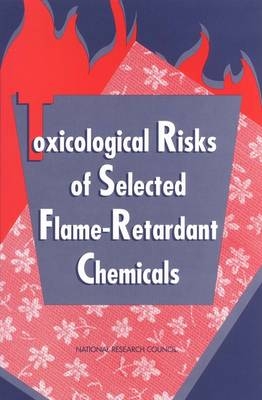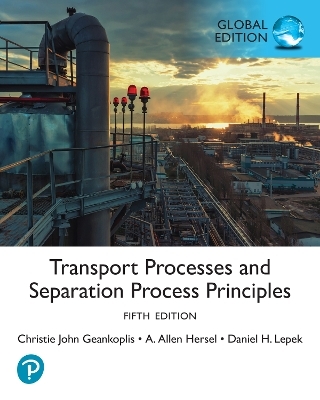
Toxicological Risks of Selected Flame-Retardant Chemicals
Seiten
2000
National Academies Press (Verlag)
978-0-309-07651-7 (ISBN)
National Academies Press (Verlag)
978-0-309-07651-7 (ISBN)
- Titel ist leider vergriffen;
keine Neuauflage - Artikel merken
Ignition of upholstered furniture by small open flames from matches, cigarette lighters, and candles is one of the leading causes of residential-fire deaths in the United States. This book deals with this topic.
Ignition of upholstered furniture by small open flames from matches, cigarette lighters, and candles is one of the leading causes of residential-fire deaths in the United States. These fires accounted for about 16% of civilian fire deaths in 1996. On average, each year since 1990, about 90 deaths (primarily of children), 440 injuries, and property losses amounting to 50 million dollars have resulted from fires caused by the ignition of upholstered furniture by small open flames. Certain commercial seating products (such as aircraft and bus seats) are subject to flammability standards and sometimes incorporate FR-treated upholstery cover materials, but there is no federal-government requirement for residential upholstered furniture, and it is generally not treated with FR chemicals.
It is estimated that less than 0.2% of all U.S. residential upholstery fabric is treated with flame-retardant (FR) chemicals. The Consumer Product Safety Act of 1972 created the U.S. Consumer Product Safety Commission (CPSC) as an independent federal regulatory agency whose mission is to protect the public from unreasonable risks of injury and death associated with consumer products. CPSC also administers the Flammable Fabrics Act, under which it regulates flammability hazards and the Federal Hazardous Substances Act (FHSA), which regulates hazardous substances including chemicals. In 1993, the National Association of State Fire Marshals petitioned CPSC to issue a performance-based flammability standard for upholstered furniture to reduce the risk of residential fires. The Commission granted that portion of the petition relating to small open flame ignition risks.
In response to concerns regarding the safety of FR chemicals, Congress, in the fiscal year 1999 appropriations report for CPSC, requested that the National Research Council conduct an independent study of the health risks to consumers posed by exposure to FR chemicals that are likely to be used in residential upholstered furniture to meet a CPSC standard. The National Research Council assigned the project to the Committee on Toxicology (COT) of the Commission on Life Sciences' Board on Environmental Studies and Toxicology. COT convened the Subcommittee on Flame-Retardant Chemicals, which prepared this report. Subcommittee members were chosen for their recognized expertise in toxicology, pharmacology, epidemiology, chemistry, exposure assessment, risk assessment, and biostatistics.
Toxicological Risks of Selected Flame-Retardant Chemicals is organized into 18 chapters and two appendices. Chapter 2 describes the risk assessment process used by the subcommittee in determining the risk associated with potential exposure to the various FR chemicals. Chapter 3 describes the method the subcommittee used to measure and estimate the intensity, frequency, extent, and duration of human exposure to FR chemicals. Chapters 4-19 provide the subcommittee's review and assessment of health risks posed by exposure to each of the 16 FR chemicals. Data gaps and research needs are provided at the end of these chapters.
Table of Contents
Front Matter
Executive Summary
1 Introduction
2 Assessment of Health Risks from the Use of Flame Retardants
3 Exposure Assessment Methodology
4 Hexabromocyclododecane
5 Decabromodiphenyl Oxide
6 Alumina Trihydrate
7 Magnesium Hydroxide
8 Zinc Borate
9 Calcium and Zinc Molybdates
10 Antimony Trioxide
11 Antimony Pentoxide and Sodium Antimonate
12 Ammonium Polyphosphates
13 Phosphonic Acid, (3-{[Hydroxymethyl]amino}-3-Oxopropyl)-Dimethyl Ester
14 Organic Phosphonates
15 Tris Monochloropropyl Phosphates
16 Tris (1,3-dichloropropyl-2) Phosphate
17 Aromatic Phosphate Plasticizers
18 Tetrakis(hydroxymethyl) Phosphonium Salts
19 Chlorinated Paraffins
Appendix A Biographical Sketches
Appendix B Flame-Retardant Composition in Fabrics: Their Durability and Permanence
Ignition of upholstered furniture by small open flames from matches, cigarette lighters, and candles is one of the leading causes of residential-fire deaths in the United States. These fires accounted for about 16% of civilian fire deaths in 1996. On average, each year since 1990, about 90 deaths (primarily of children), 440 injuries, and property losses amounting to 50 million dollars have resulted from fires caused by the ignition of upholstered furniture by small open flames. Certain commercial seating products (such as aircraft and bus seats) are subject to flammability standards and sometimes incorporate FR-treated upholstery cover materials, but there is no federal-government requirement for residential upholstered furniture, and it is generally not treated with FR chemicals.
It is estimated that less than 0.2% of all U.S. residential upholstery fabric is treated with flame-retardant (FR) chemicals. The Consumer Product Safety Act of 1972 created the U.S. Consumer Product Safety Commission (CPSC) as an independent federal regulatory agency whose mission is to protect the public from unreasonable risks of injury and death associated with consumer products. CPSC also administers the Flammable Fabrics Act, under which it regulates flammability hazards and the Federal Hazardous Substances Act (FHSA), which regulates hazardous substances including chemicals. In 1993, the National Association of State Fire Marshals petitioned CPSC to issue a performance-based flammability standard for upholstered furniture to reduce the risk of residential fires. The Commission granted that portion of the petition relating to small open flame ignition risks.
In response to concerns regarding the safety of FR chemicals, Congress, in the fiscal year 1999 appropriations report for CPSC, requested that the National Research Council conduct an independent study of the health risks to consumers posed by exposure to FR chemicals that are likely to be used in residential upholstered furniture to meet a CPSC standard. The National Research Council assigned the project to the Committee on Toxicology (COT) of the Commission on Life Sciences' Board on Environmental Studies and Toxicology. COT convened the Subcommittee on Flame-Retardant Chemicals, which prepared this report. Subcommittee members were chosen for their recognized expertise in toxicology, pharmacology, epidemiology, chemistry, exposure assessment, risk assessment, and biostatistics.
Toxicological Risks of Selected Flame-Retardant Chemicals is organized into 18 chapters and two appendices. Chapter 2 describes the risk assessment process used by the subcommittee in determining the risk associated with potential exposure to the various FR chemicals. Chapter 3 describes the method the subcommittee used to measure and estimate the intensity, frequency, extent, and duration of human exposure to FR chemicals. Chapters 4-19 provide the subcommittee's review and assessment of health risks posed by exposure to each of the 16 FR chemicals. Data gaps and research needs are provided at the end of these chapters.
Table of Contents
Front Matter
Executive Summary
1 Introduction
2 Assessment of Health Risks from the Use of Flame Retardants
3 Exposure Assessment Methodology
4 Hexabromocyclododecane
5 Decabromodiphenyl Oxide
6 Alumina Trihydrate
7 Magnesium Hydroxide
8 Zinc Borate
9 Calcium and Zinc Molybdates
10 Antimony Trioxide
11 Antimony Pentoxide and Sodium Antimonate
12 Ammonium Polyphosphates
13 Phosphonic Acid, (3-{[Hydroxymethyl]amino}-3-Oxopropyl)-Dimethyl Ester
14 Organic Phosphonates
15 Tris Monochloropropyl Phosphates
16 Tris (1,3-dichloropropyl-2) Phosphate
17 Aromatic Phosphate Plasticizers
18 Tetrakis(hydroxymethyl) Phosphonium Salts
19 Chlorinated Paraffins
Appendix A Biographical Sketches
Appendix B Flame-Retardant Composition in Fabrics: Their Durability and Permanence
Subcommittee on Flame-Retardant Chemicals, Committee on Toxicology, Board on Environmental Studies and Toxicology, National Research Council
| Erscheint lt. Verlag | 6.7.2000 |
|---|---|
| Verlagsort | Washington |
| Sprache | englisch |
| Maße | 216 x 279 mm |
| Themenwelt | Technik ► Umwelttechnik / Biotechnologie |
| ISBN-10 | 0-309-07651-X / 030907651X |
| ISBN-13 | 978-0-309-07651-7 / 9780309076517 |
| Zustand | Neuware |
| Haben Sie eine Frage zum Produkt? |
Mehr entdecken
aus dem Bereich
aus dem Bereich
Kommentar der DIN 15905-5, LärmVibrationsArbSchV und …
Buch | Softcover (2023)
DIN Media (Verlag)
CHF 79,95
Buch | Softcover (2023)
DIN Media (Verlag)
CHF 105,55
Buch | Softcover (2024)
Pearson Education Limited (Verlag)
CHF 106,45


